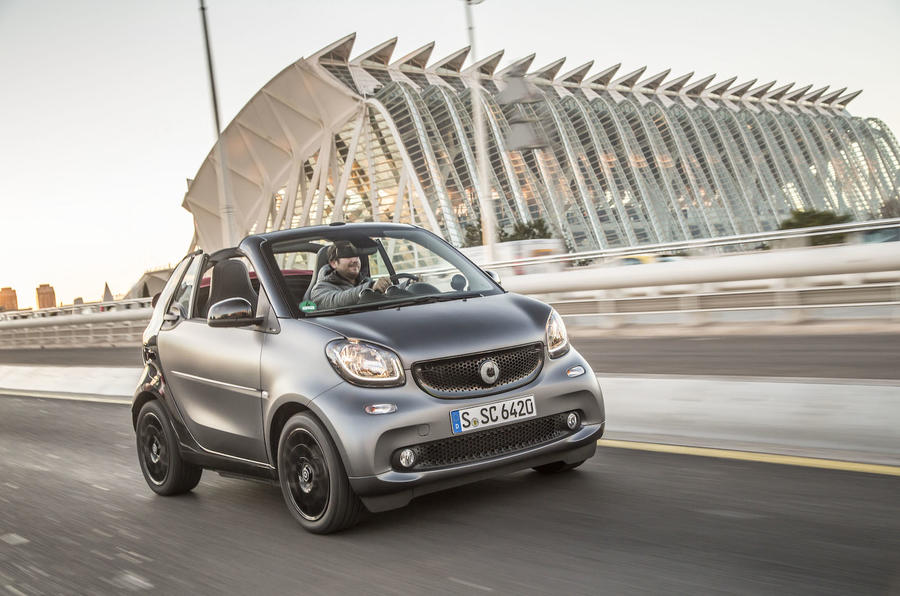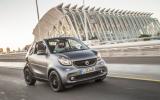What is it?
It's the roofless version of the unique Smart ForTwo two-seat city car, which like its solid-roofed Coupe stablemate, is still built in Hambach, France rather than in Slovenia together with the Forfour and that car's chassis-sharing cousin the Renault Twingo. Importantly, the Coupé's iconic length, width and height are retained, but the Cabrio is £2140 more expensive across the range.
Smart is launching the Cabrio on the back of 120,000 sales globally last year and 100% growth in the UK. Some 200,000 Cabrios have been sold since 2000, but the model still only contributes to around 15% of total Smart sales.
The Cabrio is offered with the same engine choices as the Coupe: a 70bhp naturally aspirated 1.0-litre three-cylinder unit or an 89bhp turbocharged 0.9-litre triple. At launch, a six-speed dual-clutch automatic gearbox will be the only option, but in March a £995 cheaper five-speed manual will also become available.
As with the standard Fortwo, there are three trim levels to choose between: entry-level Passion, and higher-specced Prime and Proxy versions that both command the same £695 price hike. The former focuses more on the luxury, the latter on 'performance'. Smart says there are more than 100 body colour and roof combinations, although the fabric roof is only offered in black as standard or red or blue for £115.
Here we drive the 89bhp Proxy with Smart's Twinamic auto 'box, which forgoes the Prime's standard leather seats, but instead gets range-largest 16in alloy wheels, a sports steering wheel with paddles (for auto models), a chrome tailpipe and a 10mm-lower sports suspension set-up.





























Join the debate
Add your comment
Autocar wrote: vSmart is also
I think they've all done that. The first gen was slightly different. It would open as a sunroof, then you press again to release the roof, and you would manually lock it into the fully open position. The second gen and this one, that is done by the button entirely.